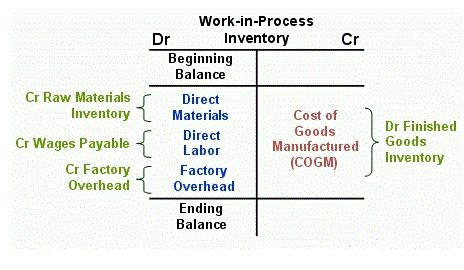
Before jumping to detail, let’s go through the basic overview and key definition first. Using multiple predetermined overhead rates is more complicated and takes more time, but it is generally thought to be more accurate than using a single predetermined overhead rate for the entire plant. Dorothy’s Hat Company computed a predetermined overhead rate based on annual machine hours. It’s a simple step where budgeted/estimated cost is divided with the level of activity calculated in the third stage.
- For instance, assume the company is bidding on a job that will most likely take $5,000 of labor costs.
- So, for every machine hour you clock while manufacturing your furniture during the year, you would apply $25 of your estimated overhead costs to that product.
- Overhead costs encompass all indirect manufacturing costs that are not direct materials or direct labor.
- This difference leads to either “underapplied overhead” or “overapplied overhead.” Underapplied overhead occurs when actual overhead costs are greater than the overhead applied to production.
- This proactive approach allows for consistent application of indirect costs, supporting immediate cost analysis and profitability assessments.
- He has been a manager and an auditor with Deloitte, a big 4 accountancy firm, and holds a degree from Loughborough University.
- The overhead applied to products or job orders would, therefore, be different from the actual overhead incurred by jobs or products.
Allow Business to Use Consistent Costing Standards
This proration allocates the difference proportionally to where the overhead resides within the company’s accounts. This approach ensures inventory balances and the cost of goods sold more accurately reflect the actual overhead costs incurred. The adjustment corrects the temporary discrepancy caused by the formula for a predetermined overhead rate is using an estimated rate. The price a business charges its customers is usually negotiated or decided based on the cost of manufacturing.
Calculating Overhead Cost Per Unit

The period selected tends to be one year, and you can use direct labor costs, hours, machine hours or prime cost as the allocation base. At the start of 2021, Dorothy’s Hat Company estimated that the total manufacturing overhead cost for the year would be $320,000, and the total machine hours would be 50,000 hours. Ralph’s Machine Tools Company assigns manufacturing overhead costs based on direct labor and applies this rate to job orders. This rate is established at the beginning of a period using estimated overhead costs and activity levels, ensuring streamlined accounting and better cost control.

Direct Labor Hours Example

When companies begin the planning process of manufacturing a product, cost projections are a large and important focus. Calculating a predetermined overhead rate is one of the first tasks management will take on because it provides a formula to estimate the production costs of a product in advance. Specifically, the predetermined overhead rate is an approximated ratio of manufacturing overhead costs determined in advance based on variable and fixed costs. It’s essential to fully understand the allocation base and allocation rate or variance for the https://ess-green-oyster41-info1sayed839893.codeanyapp.com/how-to-file-taxes-as-an-independent-contractor-tax/ predetermined overhead rate. An allocation base, also known as a cost driver, is a measurable factor used to distribute overhead costs to products or services. It serves as the denominator in the predetermined overhead rate formula and should ideally have a strong cause-and-effect relationship with the incurrence of overhead.

This involves categorizing all overhead costs and regularly analyzing them to identify potential savings. The gym bookkeeping key is choosing an appropriate cost driver – like machine hours in manufacturing or headcount in sales – to distribute overhead expenses. Rather than lump overhead costs into one expense account, businesses should allocate fixed and variable overhead to departments. Businesses should understand which overhead costs are fixed vs variable when budgeting and setting overhead rates.

- If a job in work in process has recorded actual machine hours of 140 for the accounting period then the predetermined overhead applied to the job is calculated as follows.
- Businesses review past utility bills, maintenance records, and depreciation schedules for factory equipment to establish a baseline.
- However, if there is a difference in the total overheads absorbed in the cost card, the difference is accounted for in the financial statement.
- For instance, it has been the traditional practice to absorb overheads based on a single base.
- If the actual overhead at the end of the accounting period is 1,575 the overhead is said to be over applied by 25 (1,600 – 1,575).
Overhead costs are indirect expenses incurred during manufacturing or service delivery, untraceable to a specific product or service. These are distinct from direct costs, such as raw materials and direct labor, which are directly involved in production. This difference leads to either “underapplied overhead” or “overapplied overhead.” Underapplied overhead occurs when actual overhead costs are greater than the overhead applied to production. Conversely, overapplied overhead arises when actual overhead costs are less than the amount applied. To illustrate, consider a manufacturing company that has estimated its total overhead costs for the upcoming year to be $200,000. The company determines that direct labor hours are the most appropriate activity base, and it estimates that 40,000 direct labor hours will be worked during the year.

 No products in the cart.
No products in the cart.